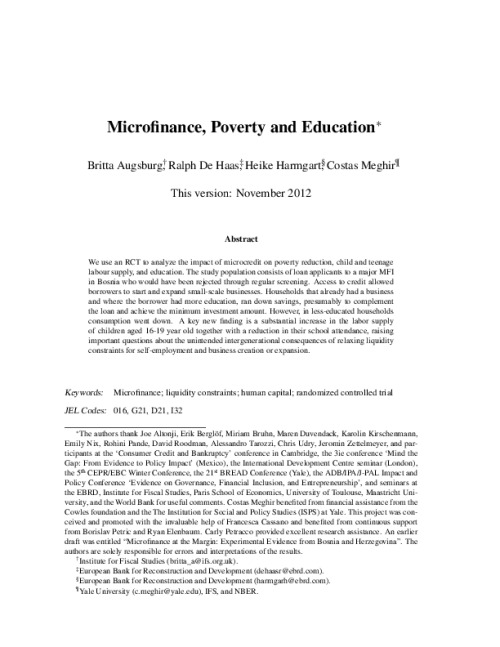Microfinance, Poverty and Education
- Britta Augsburg
- Ralph De Haas
- Heike Harmgart
- Costas Meghir
Published on 19 September 2012
We use an RCT to analyze the impact of microcredit on poverty reduction, child and teenage labour supply, and education in Bosnia and Herzegovina.
- Poverty, inequality and social mobility
- International development
- Education and skills
- Consumption and prices
- Business and investment
- Training
- Skills
- Poverty
- Low and middle income countries
- Living standards
- Labour supply and workforce
- Labour markets supply and workforce
- Inequality
- Consumer behaviour












